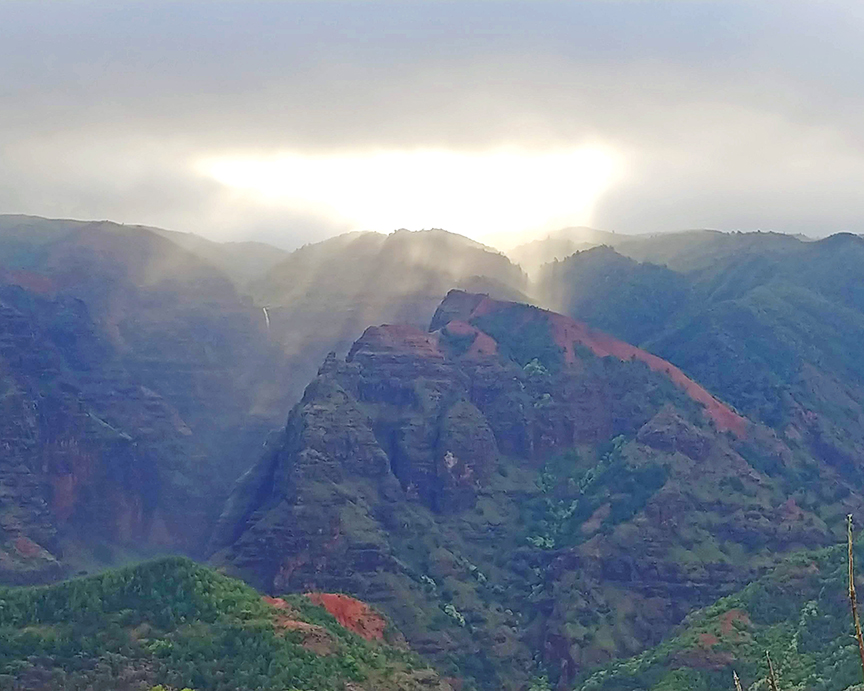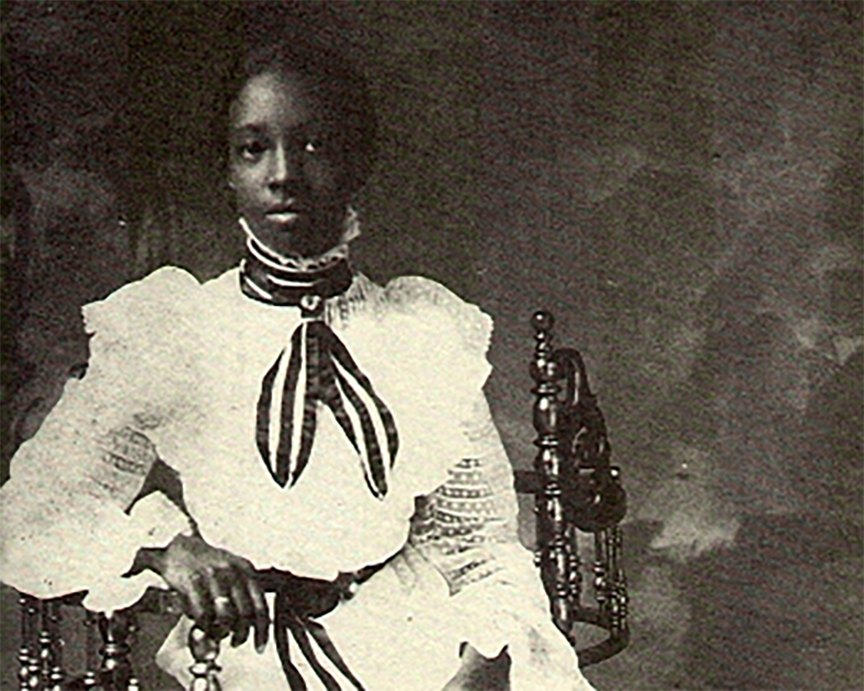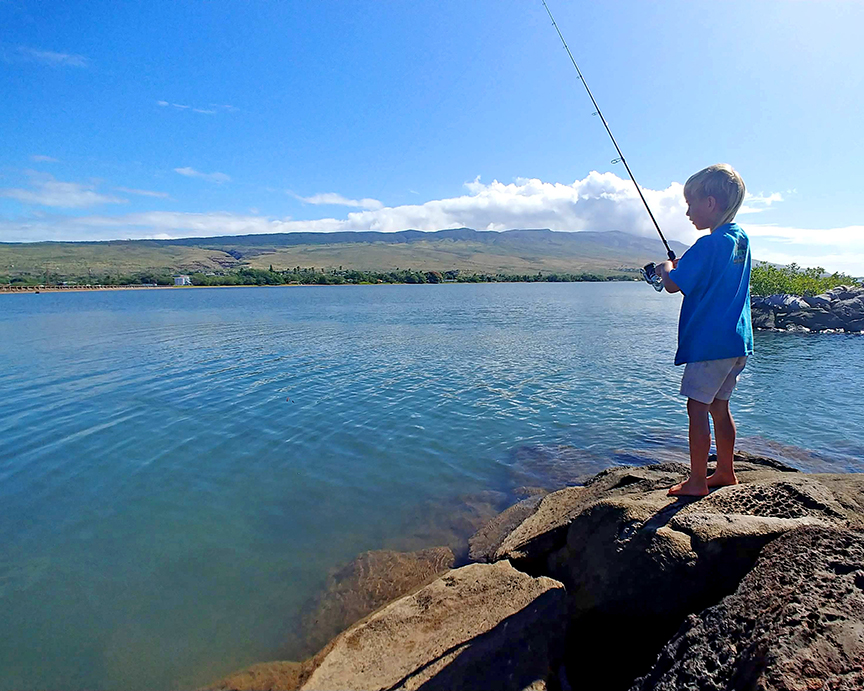By Jan TenBruggencate

Menehune Fishpond
There are lots of versions of the story about the building of the Alakoko Fishpond. It is an island feature full of mystery and misinformation.
The pond along the Hule‘ia River celebrates one of the longest rock walls in the Islands, one of the biggest geological features — in length — to be found in all Hawai‘i.
You can find Internet sources that say it’s 900 feet long, and ones that insist it’s 900 yards long. In reality, it’s closer to 900 yards, although the ends of the wall are difficult to locate in the jungle, so that’s an estimate. In any case, it’s more than a half mile in length, which is a lot of stones.
You can find references for the area of the fishpond that range from 5 acres to hundreds. In fact, it may once have been just short of 40 acres, and today, because of intrusion by mangrove trees, the open water is probably less than 30.
Even its name is in flux. Most people today call it the Menehune Fishpond, and many folks use ‘Alekoko.
Early land records and Hawaiian language newspapers from the 1800s used the name Alakoko. And then a story teller, Thomas Thrum, in 1920 used the spelling Alekoko in an article in the Journal of the Polynesian Society, and that name began to catch on. It has also gone by Pēpē‘awa and even Niumalu loko.
Because the earliest written records, including ones written in Hawaiian, primarily use Alakoko, we’ll stick with that.
You can find suggestions that the fishpond is a thousand years old. Once again, you need to check your sources’ sources.
When did it actually get built? The most authoritative source we’ve found is paleoecologist David Burney’s 2016 paper, “Late Quaternary Chronology and Stratigraphy of Twelve Sites On Kaua‘i.” It places fishpond construction at 580 years before present, give or take 30 years.
That would have put the construction in the 1430s, 340 or so years before Captain Cook’s arrival.
There’s a good chance that the fishpond was built because an early chief, who had a good supply of workers, recognized that he or she could build a straight wall across a curve in the river and gain a nice mullet pond.
There are stories from a century ago that suggest the wall was such a big project that it was not actually complete when the first Europeans got here, and that its final connection was done by Chinese immigrant workers.
And finally, there are also multiple stories that the pond wall was built by magical little people, Menehune. That they were called to build the wall, and paid in kalo and shrimps.
That suggestion has been called offensive to the actual Hawaiian workers who excavated, hauled and set those stones, and whose hands bled from the multiple cuts caused by coarse volcanic stones.
That bleeding may have led to the common names, Alakoko or “road of blood,” or ‘Akekoko, “rippling blood.”
- Jan TenBruggencate is a Kaua‘i based writer and communications consultant.
Discover more from ForKauaiOnline
Subscribe to get the latest posts sent to your email.





Leave a Reply